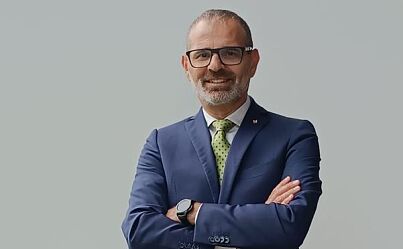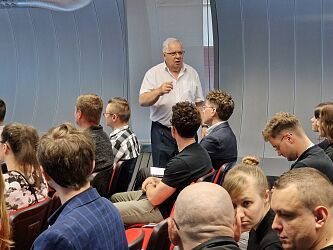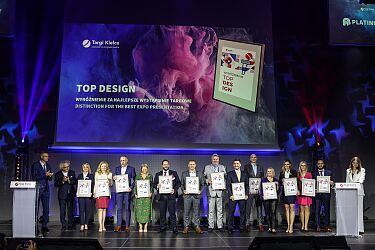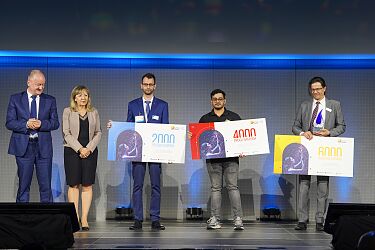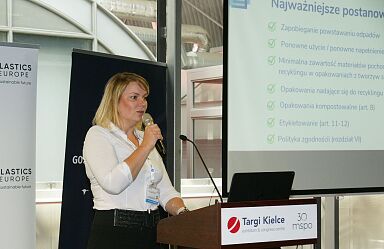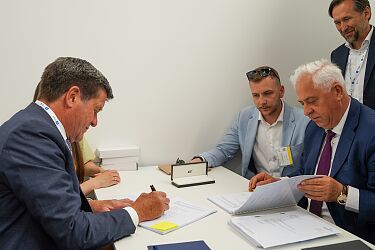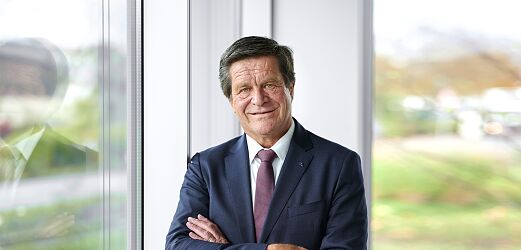News

Plastics market in Poland and Europe - high average annual growth rate, still lower compared to mid-2022 in YOY comparison
General economic trends
Despite the difficult geopolitical and feedstock situation, the Polish economy recorded a GDP growth of 5.1% in 2022 (compared to 6.9% in 2021). However, 2023 estimates indicate a sharp decline in GDP growth to less than 1% (the IMF forecasts an increase of 0.3%). Such a low growth is attributed to the fact that the economy entered into the so-called consumer recession. This is the main reason - the data clearly indicate that consumers have started to reduce consumption. Analysts forecast that the trend will continue throughout 2023, which also directly translates into the situation of the plastics industry.
As Anna Kozera-Szałkowska, Managing Director of the PlasticsEurope Polska Foundation, pointed out during the conference, the plastics industry in Poland is subject to the same phenomena and factors that shape the entire economy. These trends include serious disturbances on the energy carriers market and natural gas. The challenges related to maintaining stable logistics for the supply of raw materials and the sale of products are also there.
Slowdown in the second half of 2022
According to experts, the industry has been developing at an excellent pace over the years; the average annual growth rate (CAGR) of sold production (current prices) in 2011-2022 amounted to 8.7% (compared to 7.8% for the entire industrial processing). Growth in the rubber and plastics processing sector exceeded the growth rate of other manufacturing industries. In 2022, the total foreign trade balance of the plastics industry in Poland was negative and amounted to 1,879 thousand tone. At the same time, however, this result is better than the result of 2021 thanks to a decrease in imports of polymers by approx. 0.5 million tons and systematic growth of plastic products exports. The employment rate in the industry was also stable, or even slightly increasing.
However, is the decline in the industry's growth rate after a temporary rebound after the pandemic is a concerning trend, apparent in 2022. – In the medium term (from January 2019), a decrease in the growth rate of sold products can be observed, both in the production of rubber and plastic products and in the production of chemical products. Deficiencies in energy markets across Europe have resulted in a significant slowdown in energy-intensive industries, including the chemical industry. In addition, imports of goods in the EU27+3 countries exceeded exports for the first time in many years – said Anna Kozera-Szałkowska.
Polymers production accounts for about 1/5 of the entire chemical industry in Europe, this sector was hard hit by the crisis in the second half of last year. According to Plastics Europe data, production has been declining since Q2 2022, and the decline was particularly deep in Q3 and Q4 (12.0% and 23.7% y/y, respectively). For the entire year, the decrease amounted to 9.2% compared to 2021. Despite this, Europe has remained a net exporter of polymers. The situation is also clearly demonstrated by the deep decline in production in Germany, which is the market leader, by 9.7% compared to 2021.
The conference discussed the situation of the machine industry. – The plastics and rubber machine industry reported good results in 2022, with exports growing by almost 9.3% in 2022. The most important countries - the USA, China, Germany and Italy. Poland took a high 7th place. The plastics industry is in good shape, but the image of plastics is under pressure, we need to press for developments towards a circular economy and remember that plastics are good for the climate. VDMA is of the opinion that only by using new technologies and machines makes it possible to achieve this goal – said Harry Reichert, Technical Advisor from VDMA.
Towards industry circularity
Comparing the data in current prices (sold production of the rubber and plastics) in Poland in 2022 and in the first months of 2023, the downward trend can be seen, it started from the second half of 2022 and continues also in the first months of this year. Therefore, it should be expected that the whole year will be difficult for the plastics industry in Poland and Europe. Forecasts also indicate that the European plastics industry, as one of the industries most affected by the energy crisis, and at the same time striving to meet climate regulations, may also face serious challenges in the coming years.
– The plastics industry has long been moving towards circularity and zero-carbon goals, we believe this is the way for our industry to contribute to fundamental environmental goals, deliver benefits to society, and continue to grow at the same time. Thus it is important to stay focused on your goals, keep your commitments and commit to industry initiatives like Operation Clean Sweep® – convinces Anna Kozera-Szałkowska. OCS® is a voluntary industry program supporting companies in the fight against granulate leakage into the environment, which was also an important topic of this year's PLASTPOL Expo. OCS provides practical tools to achieve the goal; no plastic pellets are released into ecosystems. This scheme pertains to every process related to the production, processing and transport of plastics.

